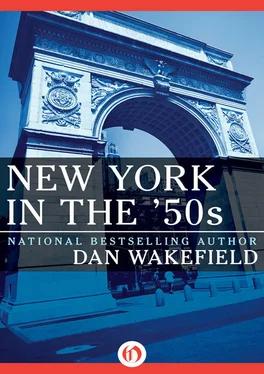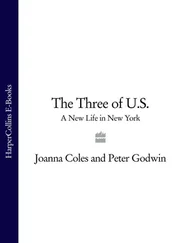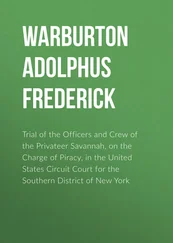When I came back to stay at Lynne Sharon Schwartz’s studio to do the intensive round of interviewing for this book in the early months of 1991, it was the first time in twenty-eight years that I had the experience of living again in Manhattan. I joined the Paris Health Club on West End Avenue, went to Sunday services at All Angels on West 80th Street—an Episcopal church with the best rock music for hymns I have ever heard—and became a regular browser at the Shakespeare & Company bookstore on Broadway and 81st Street. I learned to take the subway again instead of depending on taxis, and developed my on-guard alert for the homeless people pushing Styrofoam cups at you for change when you buy your tokens. The first time a tattered man appeared in my subway car shouting “Attention!” I thought it was a holdup or hijacking until I learned this was the sales pitch for the Homeless News . I loved being back, got a definite rush of the old excitement, yet I felt how much physically harder it was to live here than what seems by comparison the bucolic landscape of Boston and Beacon Hill.
When I asked my friends and acquaintances from the fifties who still live in New York what it’s like for them now, I got a powerful sense of the change from the city we knew forty years ago. “I’ve been watching the city fall apart for the last forty years,” Norman Mailer says. “No question it’s been falling apart since ’69. In ’69 I felt it was important to run for mayor. I had the conceit that I could do something, that I could help the city, improve it. Now I wouldn’t begin to know what you could do. I also ran because I thought it was a way to pay for my sins because I thought I’d get elected—that’s how ignorant I was.”
William Buckley has always commuted from Connecticut, but like Mailer he once ran for mayor, and says he would never do it again: “New York is a mess. The poor are having a harder and harder time. A lot of it stems from drugs—I believe in legalization, you know. I ran for mayor in ’65, but I wouldn’t dream of doing it now.”
Nat Hentoff and his wife, the writer Margot Hentoff, talk about leaving. Speaking of the contrast with the old days, Nat says simply, “New York seems more consciously show biz now than it used to be, and I’m not attracted to that.” Margot is more vehement on the subject: “New York is horrible now. We’re all talking about leaving. The city we came to doesn’t exist anymore. It was safe and glamorous and rich. Now, if you want to live in a Third World country that’s poor but exciting, you come to New York. I never wanted to go to Calcutta. I remember jazz musicians used to come back from Calcutta in the fifties and with shock tell us there were people sleeping in the streets, and we couldn’t believe such a thing. Now it’s all around us.”
Ed Fancher, cofounder and former publisher of the Village Voice , and a therapist who practices in the Village, came to New York in 1949 and has lived in the city ever since, but now is considering moving. “Crack has really made everything worse,” Ed says. “We’re thinking about leaving when our youngest son gets out of high school. He’s thinking about going to college in Boston. Maybe we’ll come up there too.”
The only friends I know from the New York of the fifties who left for any length of time and came back again to live in the city are Joan Didion and John Dunne. In “Goodbye to All That,” Joan wrote that New York is “at least for those of us who came there from somewhere else, a city for only the very young.” How does it feel to return after one’s youth? “I don’t think of it as the same place. It’s not the same people and I’m not the same person. It’s just different. I don’t have a sense of that infinite romantic yearning. I like living here. It’s irritating, but I do like being here. When I say it’s different now, it’s not objectively different, it’s us . But it’s a better place to be than London or Paris.”
And in spite of all the hazards and handicaps of New York in the nineties, look at all the people still here who never left, who couldn’t imagine life in another realm: Harvey Shapiro, Marion Magid, Norman Podhoretz, Allen Ginsberg, Murray Kempton, Knox Burger, Kitty Sprague, Lynne Sharon Schwartz, Norman Mailer, Ned O’Gorman, Norm Eddy, Ray Grist, Walter Goodman … When all is said and done, more are still here from my time than have left.
Jane Richmond stayed in New York but moved from the Village to the East 60s. For her, going back to the Village now is like stepping into her old life: “I hadn’t been there for something like ten years. The presence of the past was so great it was like having a coat on. I felt like I was invisible at the deli, the newsstand. It was like Our Town , when Emily goes back and sees everything but the people can’t see her. The sense of the past was so strong it almost took the breath out of me.”
“Everyone is dispersed,” Meg Greenfield says. “We were transients and we had our community—we had solidarity and stability. Now I go back and it’s like a sandstorm had blown over and buried the place, like it never happened. That life and community we knew are not there.”
I tell her of Helen Weaver’s theory about the “real” Village being buried underneath the current “stage set” we see now, and Meg laughs and says, “Yes, and if you did that excavation to unearth the real Village, we’d all be down there. We’d be going to Balducci’s grocery on Sixth Avenue, and the women from the house of detention would be hollering down at us like they always did, and at night we’d go to that place on MacDougal Street, the San Remo, and then to the Portofino …”
When she says this I get tears in my eyes, fantasizing for a moment that it’s possible, like Alice going through the looking glass, and I think, I’d do it in a second . I don’t want to recapture the pain, of course, the drunken nights and hangovers and the dark mornings on the analyst’s couch, but I’d like to get back the excitement, and most of all the people, the friends. Talking to them again, wherever they are, I feel an old camaraderie. I’m comfortable with them in a way I’d forgotten, as if I’m with my own people again—the refugees from the provinces or boroughs, the dreamers, the misfits like me, the ones with talent and problems, the daring ones, the witty and understanding, the loyal ones. I know I’m romanticizing now, but New York still does that to me—maybe just because I don’t live there anymore.
Going to Seymour Krim’s memorial service at the Village Gate a few years ago brought back many of the friends from those days whom I hadn’t seen for many years—Art d’Lugoff, Ned Polsky, Jim Finn, and other habitués of the back room of the White Horse. We took to the stage and told good stories about our friend Sy, and David Amram, with his usual verve, played French horn as he led a group in a composition he wrote in honor of Krim.
Yet none of that brought back the spirit of the times as much as a postcard I got a week or so later, written by Krim himself just before his death, and sent on to me by his lawyer and friend Bruce Ricker. Since Krim had chosen in full consciousness to end his own life, on instructions he asked for from the Hemlock Society (because he didn’t want to live on physically incapable of taking care of himself), he knew the time of his passing, and just before it he wrote to some friends.
In the old days he used to send postcards just like this to fellow writers when he saw a piece of theirs he admired, cheering them on (Nat Hentoff and Walter Goodman mentioned with gratitude such messages, which I myself had received from Krim), and the tone of this card was equally generous and uplifting. He explained that he had been quite ill—“heart failure and circulation turbulence”—but that “I wouldn’t want to check out without expressing affection at an unshakeable level.… I always had good times with you, my friend.” He spoke about my book Returning: A Spiritual Journey , which he’d reviewed favorably in the Chicago Tribune , but he wished that in chronicling my own troubles with psychoanalysis I had mentioned his piece “The Insanity Bit.” Krim was a writer to the end. He forgave me, though: “But what the hell. You’ve forged an unexpected path for yourself, I take my hat off to you even though it is not for moi.” Then he corrected a line I had misquoted from O’Neill’s Strange Interlude , and ended by saying, “Just wanted to make touch, wish you the happiness that’s possible. And the Work!”
Читать дальше












